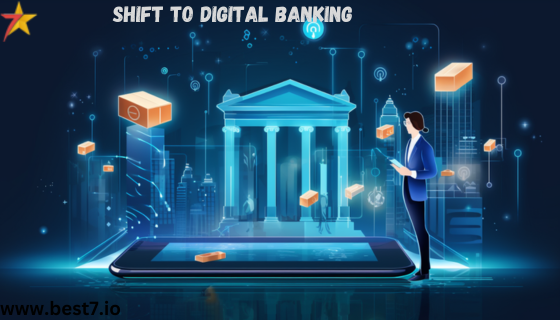
With the adaptation of digital banking services, the financial services sector is on the brink of change, ultimately giving way to sustainable banking. Given that online and mobile solutions for banking among the general population are on the rise, a significant decrease in paper usage is expected. This blog post will cover the ramifications of this transition, focusing on future assumptions while considering past examples.
The Progress of Banking Technology
In the phase of permanent evolution of banking technology, the implementation of digital technologies in the general banking system became one of the most impactful changes in the way people deal with their transactions. The rise of Fintech improved the quality of services and streamlined the process of adopting different payment systems, moving the population towards an ultimately paperless system of transactions. One striking example is Chime, a neobank whose mobile banking practices reduce reliance on paper products, making documentation largely obsolete. The bank’s focus on paper-saving tools like electronic payments and e-statements exemplifies this shift.
Projected Timeline for Digital Banking Adoption
In the context of expecting more profound changes in the future, by 2025, digital banking users are anticipated to exceed 3.6 billion. Professionals in IT and business sectors, already inclined toward digital solutions, will likely further reduce paper usage. This progression underscores a steady decline in paper reliance within banking in the coming years.
Environmental Benefits of Digital Banking Transition
The shift to digital banking is advantageous for environmental sustainability. Traditional paper documentation in banking has a severe environmental impact due to the high resource intensity involved.
Environmental Benefits of Reduced Paper Usage
- Decreased Paper Usage: With the rise of online banking and digital statements, paper demand in the banking sector is projected to decrease by 50% by 2030. For each tree saved, the waste destined for landfills also reduces.
- Lower Carbon Footprint: Producing and transporting paper contributes significantly to greenhouse gas emissions. Reduced paper use translates to a smaller carbon footprint.
- Resource Conservation: Transitioning to electronic statements will save substantial water and energy resources, with forecasts indicating 1.3 billion gallons of water saved by 2025.
- Increased Recycling Rates: As the sector shifts focus from paper dependency, recycling efforts will grow, contributing to sustainability.
- Enhanced Efficiency of Operations: Digital banking offers faster transaction processes, removing the need for mailing or scheduling around physical items.
- Demand for Eco-friendly Solutions: Environmentally conscious consumers, especially the younger demographic, will favor digital banking, raising its popularity.
- Innovation in Financial Technology: The digital shift encourages financial institutions to adopt technology, enhancing workflow and electronic document management.
Customer Convenience and Financial Literacy in the Digital Era
Digital banking brings notable convenience, changing how consumers view banks and manage money. Studies predict that by 2026, about 80% of the customer base will rely on digital channels for banking. Several factors drive this trend:
- Accessibility: Digital banking allows 24/7 access to accounts and transactions.
- Savings: Simplified operations, such as transfers and bill payments, are completed with a few taps.
- E-statements: Customers receive statements digitally, reducing mail clutter.
- Financial Literacy: Digital banking tools support financial health education, budgeting, and reporting.
- Personalized Service via Analytics: Financial institutions can customize services using data insights.
- Enhanced Security: Digital banking addresses data security, safeguarding financial information.
- Integration with Financial Services: Banking will increasingly integrate with diverse financial services, offering more transparency to customers.
Innovation-Driven Sustainability in Banking
The future of banking focuses on sustainable innovations shaped by technology. New developments transform banking practices, with technology becoming an increasingly vital component. Key trends include:
- Expansion of Digital Payment Solutions: Wearable devices are expected to support payments, reducing paper use.
- Automated Invoicing and Billing: These solutions minimize paper reliance for billing purposes.
- User Experience Enhancements: Improvements in UI and UX are expected, making banking apps widely accessible.
- Smart Contracts via Blockchain: Blockchain-based smart contracts allow secure, paperless transactions.
- Green Banking Initiatives: Banks are adopting eco-friendly initiatives, from carbon offset programs to green banking cards.
- Data-Driven Decisions: Advanced analytics will enable banks to tailor services, improving customer satisfaction.
- Regulatory Compliance Evolution: Changing regulations will drive innovation, aligning services with eco-friendly practices.
A Sustainable Digital Future for Banking
The digital shift in banking will have a ripple effect across the financial sector, aligning closely with consumer demand for sustainable and efficient solutions. By reducing paper reliance and promoting “green math,” technology will define the future of banking in terms of sustainability and efficiency.












